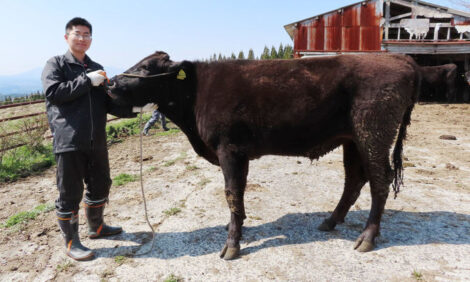



Genomics And Its Role in Efficient, Sustainable Beef
GLOBAL – One way to make the beef sector more efficient is through cross-breeding, a leading genomics expert told a US conference today.Dr Matt Spangler, University of Nebraska, said that the benefits of heterosis have not gone away.
Using good decisions in genomic selection have resulted in “huge leaps” in feed efficiency and heat stress, as well as 35 per cent of iron content variability in beef, the National Cattlemen's Beef Association conference heard in San Antonio.
He sees a number of ways in which estimated breeding values and other genomic tools in the US cattle industry are “underutilized” and “misunderstood”.
Selecting breeding stock on phenotypic lines can yield progress but it is the grand children on the operation who see the benefits, warned Dr Spangler.

He outlined selecting on hybrid vigour terms as such; offspring are equal to half the genetic of the sire and half of the dam plus the “mendelian sampling term” – put simply, this is the name given to the processes that often make us look different to our brothers and sisters.
However, he said: “Data shows that only a third of us use this idea when selecting bulls. In dairy, swine and poultry sectors, 100 per cent of producers implement this.”
A caveat was given however. He stated that nutritionists have an easier job than geneticists as they can feed and weigh cattle and examine the difference, while it takes longer in genomics.
But he said, if producers are involved in the process, the matter seems “a little less opaque”.
Breeds
One misconception is that of breed characteristics. He said that breeds are an entirely human concept and in the case of mainstream breeds there has been a lot of divergence, largely because of “perceived marketing benefits.”
Dr Spangler explained:“A breed is whatever we want it to be. We need to think outside of this paradigm.
“It’s a case of which animals from breed A breed with which animals of breed B. Everything else that is discarded is not economical.”
Age and Generations
He said that producers can trust estimated breeding values of young cattle and select two year olds with a degree of confidence, questioning some people in the industry who prefer older bulls.
The average generation in beef cattle is six years – the average age of parents when the next generation is born. Dr Spangler’s point was that when you select a ten year old bull you are killing the rate of genetic change.
“Why select an old bull anyway?” he asked the audience. “If it’s the best bull, then what have we been doing for the last nine years?”
He said high lactating cows are inefficient, with higher maintenance requirements and suggested the industry, generally speaking, requires cows that are “conservative” in lactation potential and “moderate” in mature size.
“Everyone has 1100 pound cows, just ask them, but we have problems in some environments when they are too big,” he added. “We have cows that milk too much and need more nutrients when lactating ad dry.”
What If?
He suggested producers get a “better handle” on heifer rearing costs and perhaps even consider buying bred cattle that are developed to be maternal and from a similar production environment.
Dr Spangler added that this takes much of the hard work out of the job.
“You don’t have to worry about cow growth and weights or dystocia problems because someone else is taking care of that.
Addressing smaller herds in particular, he said: “You cannot convince me that you enjoy late calving, so why do it?”
His advice was to pay someone else to cope with these issues and then buy bred cattle.
“The fact is the majority of cows produced in this country are produced in small herds and this is unlikely to change any time soon,” added Dr Spangler.
He disregarded cow culling as a genetic decision, instead dubbing it a “management decision”.
Michael Priestley
News Team - Editor
Mainly production and market stories on ruminants sector. Works closely with sustainability consultants at FAI Farms



